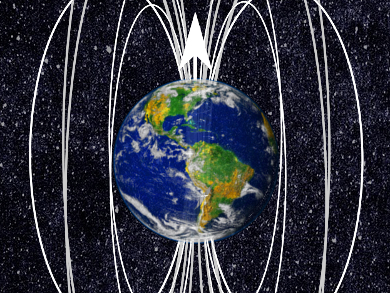For at least 3.4 billion years, convection in the liquid outer region of Earth’s core has generated the planet’s magnetic field. Previous explanations for what drives this geodynamo, including thermal convection, radioisotopic decay, and partitioning of light elements into the mantle and heavier elements into the core, fail to fully account for observed data.
A model devised by Joseph P. O’Rourke and David J. Stevenson, California Institute of Technology, Pasadena, CA, USA, fills in some of the gaps. For instance, seismology measurements show that Earth’s core is 10 % less dense than a pure iron/nickel alloy would be. However, first-principles calculations show that at the high temperatures and pressures present at Earth’s core, between one and two percent magnesium (by weight) could dissolve into the core, reducing its density.
Recent high-pressure measurements show that iron loses heat much more rapidly than previously thought, giving a much younger calculated age for Earth’s core. The model shows that the missing heat could have come from impacts with large interplanetary objects during Earth’s early accretion phase. The model also predicts that a core heat flow close to the present-day value would have been enough to power the geodynamo for Earth’s entire history.
- Powering Earth’s dynamo with magnesium precipitation from the core,
Joseph G. O’Rourke, David J. Stevenson,
Nature 2016, 529, 387–389.
DOI: 10.1038/nature16495




